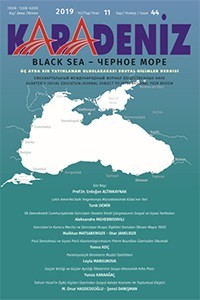AMASRA KALESİ’NE DAİR KORUMA ÖNERİLERİ
PROTECTION RECOMMENDATIONS FOR AMASRA CASTLE
Author(s): Nurhilal BurakSubject(s): Cultural history, Museology & Heritage Studies, Preservation
Published by: Kültür Ajans Tanıtım ve Organizasyon
Keywords: Amasra; Genoese; defense structure; protection reccomendations; UNESCO;
Summary/Abstract: Defense structures consist of highly complex and timely construction techniques. When the civilizations that dominated their lands had changed, castles were repaired and used. Fast construction techniques with low cost have been preferred, usually without special designs or decorations. These cultural properties, which have lost their original function as of the last century, are the most decisive elements of their cities. The defensive structures in the user's urban memory are very decisive because they have never witnessed the city without this defensive structure. Therefore, interventions to these structures should be on the smallest scale.Amasra Fortress covers a part of the district center. Some parts of the castle have been completely destroyed. Detailed researches have been made on the surviving parts. The periods during which the castle was built were investigated. The Amasra Fortress, which has been on the UNESCO World Heritage Temporary List since 2013, has been compared with the entire Genoese colonial Black Sea coastal castles.The aim of this study is to elucidate how to preserve this cultural heritage where academic studies are scarce. Therefore, the historical background of the Amasra Fortress is briefly mentioned. The current situation of the castle was then documented. The damages observed and documented on the castle were revealed. How to deal with these damages is determined. Finally, short, medium and long term protection recommendations have been developed. The most important criterion is the implementation of conservation proposals. Therefore, interviews, observations and comparisons with other walled settlements in the area are based on. In the light of academic studies, it is aimed to transfer this cultural property to the future by protecting it correctly.
Journal: Karadeniz Uluslararası Bilimsel Dergi
- Issue Year: 2019
- Issue No: 44
- Page Range: 103-114
- Page Count: 12
- Language: Turkish

